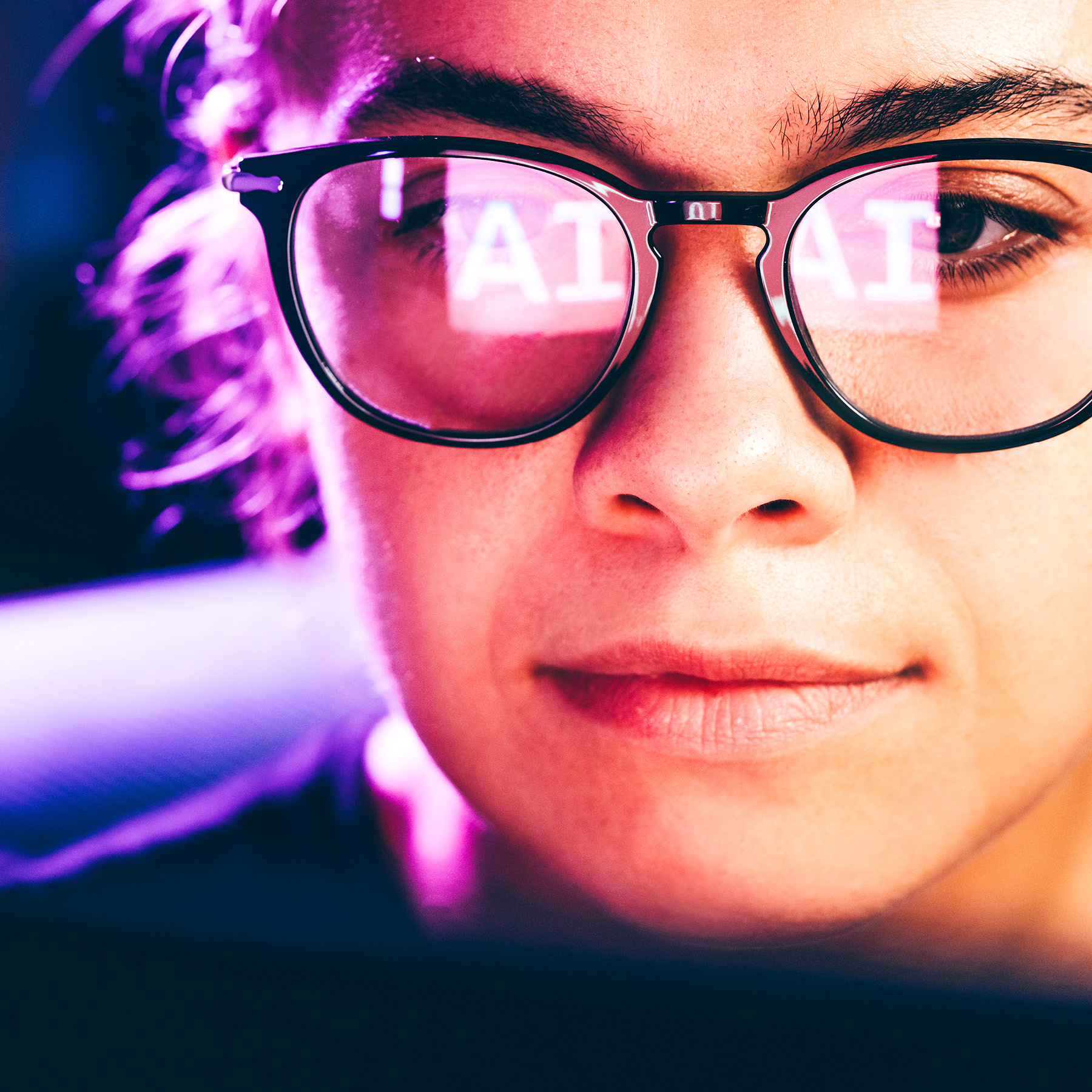Language
You can read the magazine in one of the following languages
Geolocation
You can read the global content or the content from your region

When ChatGPT burst onto the scene in November 2022, one message dominated them all: AI is here to stay, and if you don’t get on board fast, you are already behind.
I’ve been creating content for 20 years, with over 4,000 pieces published in both traditional and new media under my name and my clients’ names, and I received this message loud and clear. Soon after ChatGPT was introduced, I assigned one of our team members to investigate how AI could help us provide better PR services.

Everyone is still figuring out how to use this new technology. And the smartest companies are going slow.
The outcome was better idea generation and content that was better tailored to client voices.
But we also prioritized the human side of the team, with AI essentially a supporting tool. We still write op-eds and press releases ourselves, write our own email pitches, and call and text reporters to set up interviews.
My instincts were to incorporate AI deliberately as one of many tools in the box, but with other firms seeming to invest more heavily and quickly into AI’s content creation potential, I sometimes feared that this slower approach would mean we were losing ground to the competition.
Yet as I was writing this piece and interviewing experts on content creation in the era of AI, something became clear: we aren’t the only team taking our time. Everyone is still figuring out how to use this new technology. And the smartest companies are going slow.
“There are many limitations in the new world of AI,” said John Armstrong, Co-Founder and Chief Creative Officer of Joy Riot Agency. “We were working on an ad campaign for a municipality, and our setting was a train station.
“We asked AI to populate our train station image with people – and it gave us people in bathing suits, heavy wool suits and other clothing nobody wears at a train station in the summer.
“AI may know the answer to a given question, but humans need to correct the diction and tone to put the copy into brand voice.”

It’s just another piece of incredible technology that, just like previous game-changing technologies like cars, automated factories and computers, need people to make them operate at maximum efficiency.
He also said “cultural reference points” and “emotional cues in voice and art direction” are human strengths that continue to be AI weaknesses.
And even when AI does what it’s supposed to, humans often fall short when using it. “It’s critically important that businesses and organizations understand that gaming the system won’t work,” said David Fouse, Partner and Digital Team Lead at Pinkston.
“Just like keyword stuffing in an attempt to game Google algorithms was popular for a time, people seem to think they can game the AI system. But all that will do is irritate users, provide very short-lived advantages, and result in commoditized content instead of great content – especially great thought leadership.”
What this means for content creators is that, yes, the future includes AI – but it is not the star of the content creation show. It’s not even a member of the cast, or a stunt double, or part of the production team.
It’s just another piece of incredible technology that, just like previous game-changing technologies like cars, automated factories and computers, need people to make them operate at maximum efficiency.
AI is now at everyone’s fingertips – from a five-year-old writing her first pen pal letter to a head of state preparing an important speech. The whole world can use roughly the same prompts and get roughly the same outputs in the same amount of time. But if everyone has the same tool, content creators need to be careful of pitfalls:
• Failing to stand out by regurgitating ChatGPT answers.
• Losing business by commoditizing content instead of having tailored, personalized messaging.
• Producing content that sounds odd, awkward or even offensive, like six-fingered ‘hallucinations’ and images of black Nazis.
What organizations can and should do is use AI to make people more human. That’s what one of my former clients, a leader in the generative AI space, found most exciting: the potential for AI to handle boring and redundant tasks that steal time from the creative, human-to-human things that only we can do.
Peraton Chief Communication and Engagement Officer Matt McQueen calls it ‘the human–AI team’. He’s implemented that very idea at a federal government contractor that employs 19,000 (non-robot, human) people and grosses over seven billion dollars in annual revenue.
“We’re adopting AI methodically for our customers across defense, intelligence, civilian agencies and more,” McQueen said. “We primarily use AI to develop creative concepts quickly [and to] optimize our SEO and social media, [led by humans to achieve] detail, context and nuance that our work requires to be effective.”

One place where that agility will be most valuable is at the front end of projects, when crazy ideas are a critical part of the brainstorming process.
McQueen predicted that AI won’t replace people, but instead will “increase our team’s agility and compress the time between starting and finishing a project”.
One place where that agility will be most valuable is at the front end of projects, when crazy ideas are a critical part of the brainstorming process.
“AI significantly enhances brainstorming creativity to save time and money,” said Carlos Diggs, a marketing executive who is on the Legal Marketing Association’s Mid-Atlantic programming board.
“Traditional brainstorming has to navigate fear of criticism, egos and other factors. Conversely, generative AI can quickly produce a variety of ideas within seconds. AI tools can create diverse visual concepts [for example, rustic, fantasy, futuristic] almost instantly, allowing teams to visualize and decide on a creative direction promptly.”
AI may also allow small teams to compete at scale, to grow existing competency capabilities and even add new ones. “AI can compose music based on specific prompts, providing initial drafts that can then be refined by professional musicians,” said Diggs.
“This rapid idea generation is particularly useful for exploring creative avenues outside one’s usual experience or knowledge base, and the cost of accessing AI tools is minimal compared to hiring professionals.”
And AI can provide the data necessary to raise your content above the competition’s. Design Alliance Co-Founder Tonnie Chamblee said that one of their clients, the Global Autoimmune Institute, could use AI in the future to provide “large-scale data analysis to understand cause and progress of autoimmune illnesses for diagnoses – and then apply that knowledge through AI-powered chatbots.”
Imagine the kind of content this knowledge would help the humans in the company generate for press, social media, donor presentations and conference panels.

AI can provide the data necessary to raise your content above the competition’s.
But just as AI technology is not yet ready to provide maximum value, the teams that use AI will need to grow in their capabilities – and not just the technical ones. Leaders will have to build entire cultures around AI that account for remote work and departments that have different thinkers. For example, graphic designers, speechwriters and social media experts may not always speak the same language — and may prefer harmful siloing to true collaboration.
Like the statistics nerds on Moneyball who knew more than the scouts with decades of experience, and Young Sheldon’s fourth-down advice that convinced his football coach father to change his punting decisions, AI can give the data that cuts down on mistakes and elevates successful decision-making.
But coaches and content leaders will always have to decide whether the fourth-down end run goes left, right or up the middle, because the linebackers haven’t seen that one yet.
The opportunities inherent in AI don’t mean everyone is going to thrive, or love, the outcomes. Last year’s Hollywood writers’ strike made news for a variety of reasons, and it unearthed many problems inside the insular moviemaking culture. But at its heart, the strike was about how changing technologies – including how AI is replacing writers – threaten a lot of jobs.
People in my former industry, journalism, face the same challenge. For content leaders, this means being aware that your team will look very different in 2025 from how it may have looked when ChatGPT was introduced. There will likely be fewer creators, more forward-looking strategists, improved collaboration mindsets and processes, and amazing back-end editors.

The opportunities inherent in AI don’t mean everyone is going to thrive, or love, the outcomes.
Adjusting to this reality means being intentional and deliberate about building the right team and the right culture, said Samantha Kenney, Chief Marketing Officer for OfficeRnD, a technology solution for hybrid and flexible workplaces.
“Company culture isn’t just snacks in the kitchen or how many paid time off days employees receive,” she said. “Those who enjoy the strategy behind their content, or finding creative ways to micro-target audiences, will thrive. Those who want to punch a clock will struggle – or be left behind entirely.”
Chamblee said leaders will be able to develop this culture only by squaring a challenging circle: giving team members time to play, experiment, and even fail while also establishing guardrails like data-driven insights, flexible workflows, modern collaboration tools and consistent branding to keep everyone on track.
And that in turn requires the right HR processes to ensure that only the right people are on the organizational train.
GCM CEO Zach Giglio, who helps companies incorporate AI into their workflows, said that executives will find the best team members candidates from innovative backgrounds who are creative, tech-savvy and adaptable, and will retain them by “requiring a focus on cross-functional teamwork and professional development along with company-provided continuous learning opportunities”.
We humans have been freeing ourselves from the mundane to accomplish bigger and better things since the dawn of time. Pipes transport water we used to carry ourselves, horses and then cars replaced the need to always use our feet for transportation, and Excel Spreadsheets replaced the ones I watched my parents fill in – by hand, with a pencil, on their desk, before putting it into a filing cabinet.
For all of the brouhaha about how AI will replace people, its greatest use isn’t eliminating our role in the creative process. It is instead allowing us to be most fully ourselves – freeing up time and energy from that which is time-consuming, boring and inane.
“AI is like any technology,” said Fouse, the Pinkston partner. “We can use it to become more efficient and to peel off the parts of our jobs/lives that are mundane and machine-like. It can allow us to live richer, fuller, more human lives, but getting there requires people to turn on their brains and really begin to understand what makes them most human.”

Dustin Siggins
Contributor Collective Member
Dustin Siggins founded Proven Media Solutions to help clients make an impact by getting in the press. Drawing on 20 years’ experience as a writer, journalist and PR consultant, he has developed an approach that secures media coverage in diverse industries like financial technology, health care, education and politics. Dustin’s journalism and commentary have appeared over 3,500 times, including in national media outlets, which has laid the foundation for becoming a key communications advisor. For more, visit https://provenmediasolutions.net/